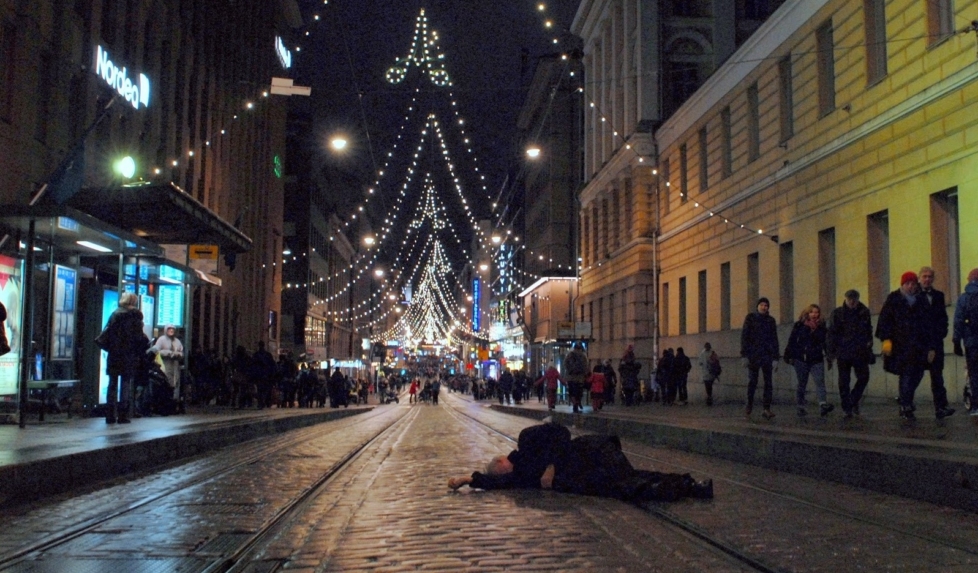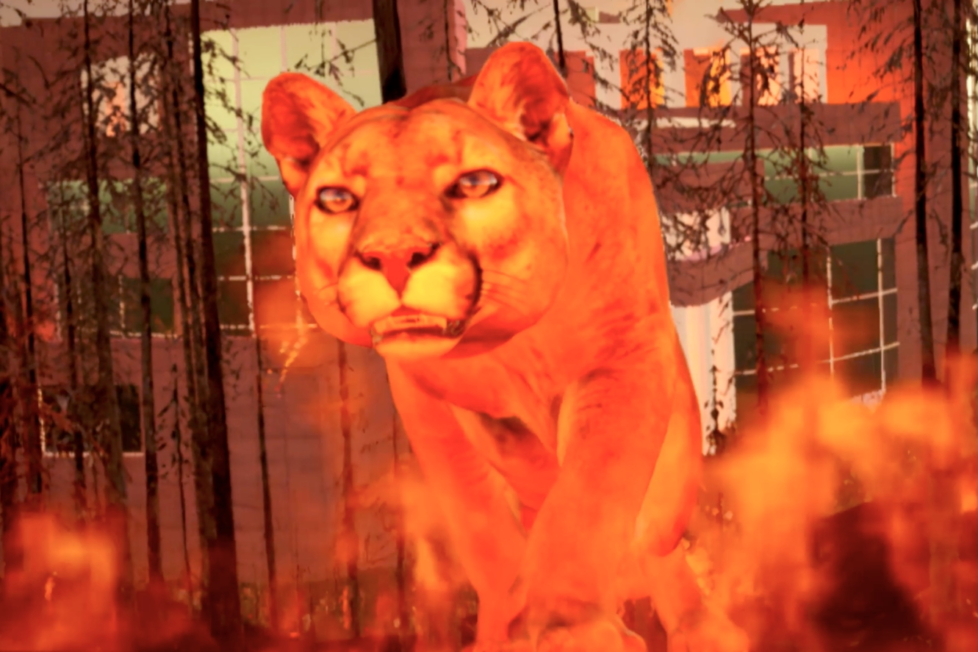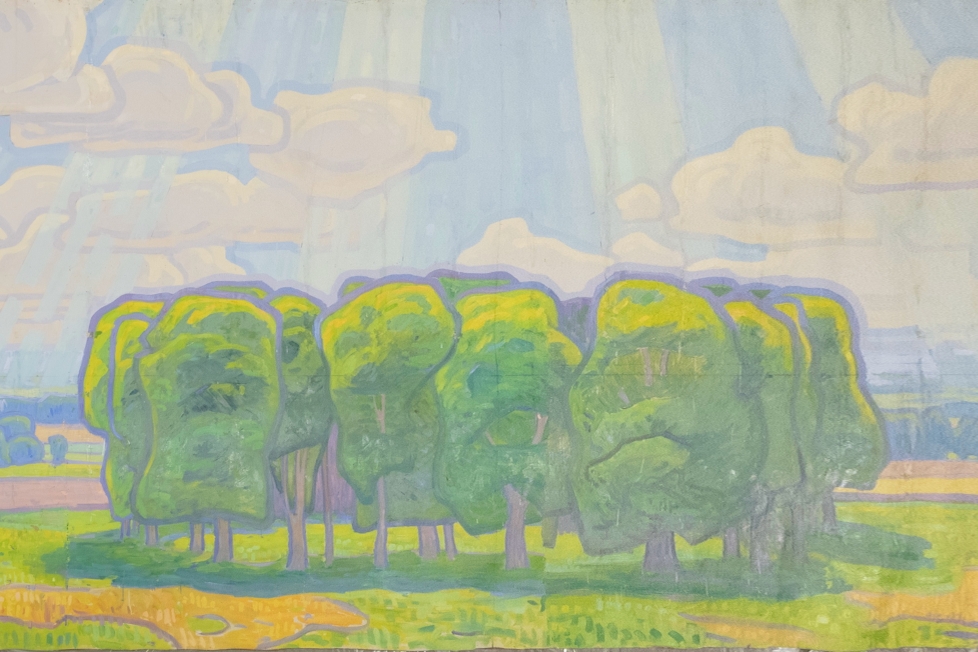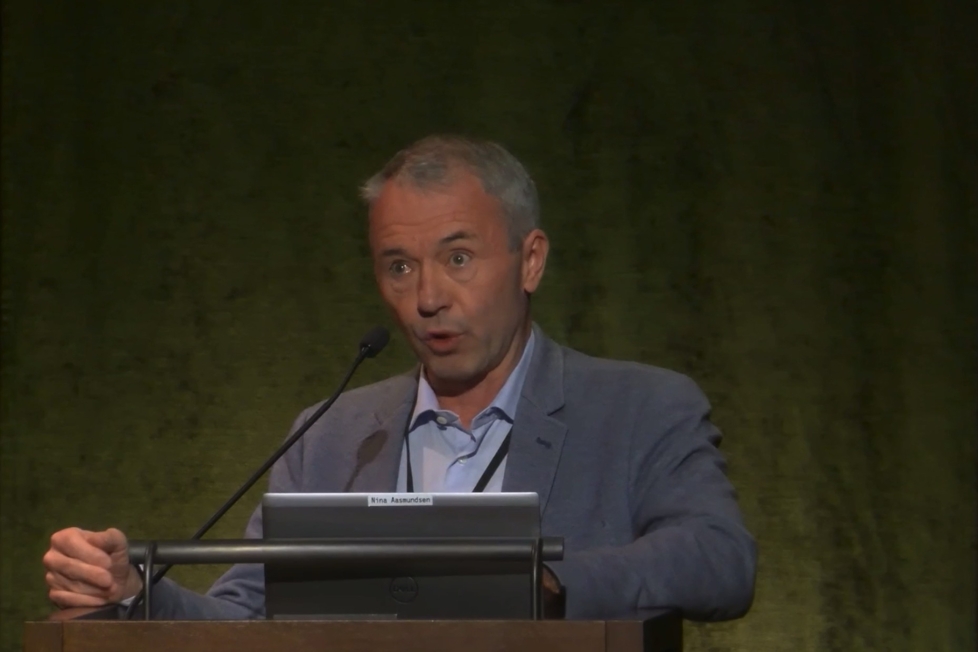
Santiago Mostyn, raised in Zimbabwe and Trinidad and Tobago, has had a continuous presence as an artist and a curator in the Swedish art world in recent years. His gallery debut at Andréhn-Schiptjenko in 2018 explored climate change denial. Returning to the gallery three years later, his main theme is euphoria: “the ecstatic body” triggered by the “choreography of state control,” according the exhibition text. There are certainly effects of contrast at play, emerging most clearly in the central video triptych Altarpiece (2019) in which we are tossed between violence and joy, strictly controlled military parades, and spontaneous dance videos from social media – between Trump’s presidential inauguration and private baby pictures.
Yet, I also arrive at a different interpretation, one concerning issues of subjecthood and creating your own language, your own gaze. This is often claimed to be the main theme of the American artist Arthur Jafa’s practice, but I have never been able to locate this in his works. Ultimately, they seem to reproduce the same old problem of Black suffering becoming spectacle – a posturing that once again renders the Black body an object for consumption.

This is not to say that every exhibition which features Black people has to be uplifting, but I refuse to diminish the very real enticement and danger of fetishising suffering, and the belief that the display of suffering can be subversive in itself. In reality, images of violence against Black bodies are as old as the violence proper, and are blunt instruments for arriving at subjecthood. If images of lynchings were once entertainment, sold as souvenirs and sent as cheerful postcards, then why would today’s images of mutilated Black bodies be anything other than a continuation of that violence?
Is not the prerequisite for the violence directed at Black bodies – and the images of this violence that are today reproduced, mainly in the form of uncensored execution videos, in the name of solidarity – that Black people have still not reached subjecthood in the public consciousness, and that the Black body has not yet become fully human?
In Mostyn’s Altarpiece, something completely different takes place. First of all, the film is hypnotic. Once I start watching, I don’t want to stop. I keep following the same loop over and over again. For me, this is related to the question that can be inferred in the exhibition title: Your Shadow is a Mirror. This is a question about subjectivity in relation to photography or representation, but I think it goes further than that. I believe that what is at stake is rather: How should we deal with the gaze? How do we navigate the thin line between object and subject on which blackness has been moving for so long? How do you go from shadow to human?
One of the strengths of Mostyn’s video work is its density; it is so rich and full of content. There are so many images to be swept away by, so many seconds you want to experience again, so many possible interpretations. Take the moment, for example, when Malcolm X wipes his face with a white napkin, which is juxtaposed with images of natural disasters and a dance signifying both liberation and coercion. Different aspects of the same physical expression slide and layer atop one another in the three-part screen, creating a sense of uncertainty that is enhanced by the exquisite music pairing. Over images of military parades and people moving between joy and violence, of Black activists and despots, the question echoes: “In the end, who do you think will win?”

Themes such as consumption, power, and production recur in Flex (2019), an enlarged photograph of a Black man and white woman in an embrace. The image is folded, and impossible to experience in its entirety as only a narrow section of the enormous print is visible. Ghost/Monument (2020) uses a similar approach. Displayed on the back of the wall on which the film is projected, the work consists of what appears to be pages from magazines such as Ebony or Jet – complete with advertisements for hair products – and a frame protruding from the wall. On one side is a picture of a human where the face seems dissolved. On the other side is a close-up of a statue (whose naked buttocks are fleshy and violent) bent over something that seems to be half human, half object, with its hands stretching skyward, as though crying for help, as though attempting to escape.
Together, these works form an experience that does not yield to the contradictions in every attempt to find a way forward. Through collage, the merging of old images, one can sense an emergence of Black subjecthood, a Black gaze, in Mostyn’s practice. Just as the enormous image in Flex can unfold and become larger than the room in which it is displayed, this gaze in parts appears as a promise, a manifestation of all that is to come.











